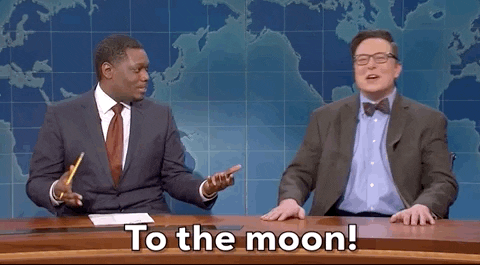If you’re not in finance or commercial real estate you probably don’t track the 10-year treasury that closely, and why would you?
I only check it infrequently, but over the past couple of months, I feel like I’ve been to CNBC to check that chart more than I have the previous 5 years.
Why does it matter though?
The 10-year treasury is a loose indication of what commercial mortgages are going to be. Especially for multifamily, agency loans (Fannie Mae and Freddie Mac) often use a spread over their 10-year term mortgages which are fairly common.
Maybe not the best explanation, but most people I talk to and listen to seem to use the 10-year as the defacto index when talking about where rates are going.
And where it is going right now is up, up, and up.
Credit: CNBC
I added the 5-year graph just to show the different movements over the past few years. From the very low lows of COVID (less than 1.0%), to the fairly sustained lows prior to rate hikes by the Fed starting in 2022 (1-1.5%).
We’ve had rates go up over 400% in the past 2 years!
They doubled within 2022.
And in the past month alone it’s gone from 4.15% to 4.79% or a 15% increase
Now this is really only part of the picture since lenders will tack on their spread to give the borrower their interest rate. Spreads can widen or shrink depending upon how badly they need to lend money or how risky they see a loan.
So if you locked rates today you might be 10-yr + 200 bps (basis points). Which would give you a loan amount of 6.79% roughly.
So why is this important?
The whole idea of debt for real estate is to take on more risk to increase the returns. So essentially if you’re buying something that yields 6%, you can borrow money at 5% to increase your cash flow above the 6%, but in return, you take on more risk by being subordinate to the debt.
So in 2021 you could buy a going-in 4.0% cap rate, get floating rate debt at 3%, and be positive leverage on day 1. Which in theory is the correct idea.
But now, you’re new debt options are 6.5% or more and I would be very impressed if someone took their 4.0% cap rate and got it all the way up to an operating 7%+ cap rate where they are still in positive leverage.
So back to the 10-year treasury, it’s way up, it loosely tracks what the fed is doing with the federal funds rate, but not exactly. But there’s a good chance that interest rates are going higher and/or staying higher for the foreseeable future.
The problem for real estate comes on the valuation side.
Do you buy negative leverage deals and assume that there will be buyers for negative leverage in the future?
That seems like an odd extended investment thesis. Why would you assume buyers in X amount of years would continue to want negative leverage?
Or do you buy deals with negative leverage today, and assume rates will come down and when you sell it’ll be positive leverage?
You could do that, but if you think rates will be lower in 5 years, it’s probably easier to just buy bonds at today’s rates, and when rates drop your bond would be worth more (I’m definitely oversimplifying though).
Or do you wait to buy deals at positive leverage?
Deal values would have to come way down from where they were the past 2-3 years, in order to get positive leverage today, which would probably sell for less than current debt levels for many deals.
So there’s not really a clear answer, but the more the 10 year goes to the moon and beyond, the harder it is to answer these questions.
But the longer this goes on the faster current loans are going to mature and we’ll quickly find out how the market is going to view these obstacles.
All the best,
Chris Grenzig
Owner
JAG Capital Partners | JAG Communities
Chris@jag-communities.com





